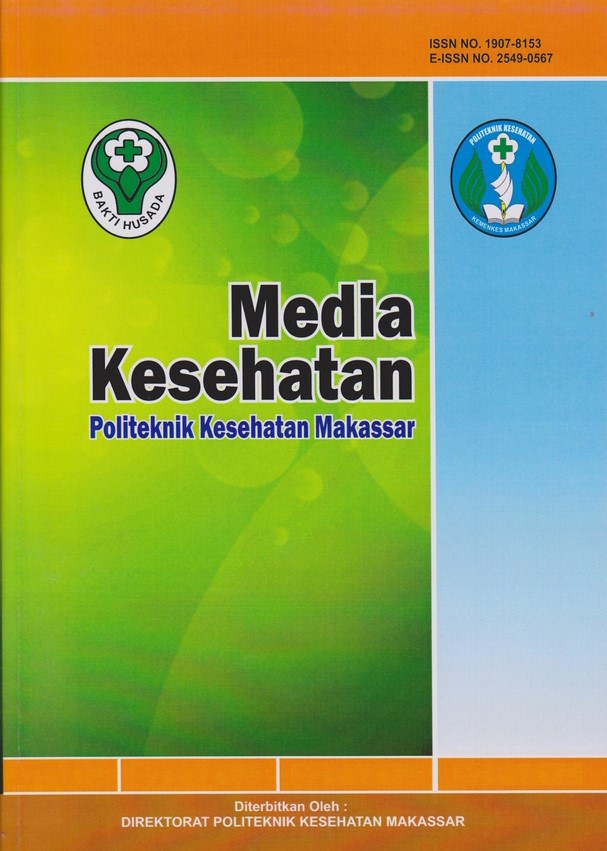Phytochemical Analysis and Antibacterial Potential of Papaya Leaf Extract (Carica papaya L.) against Salmonella typhi
DOI:
https://doi.org/10.32382/medkes.v19i2.780Keywords:
Daun Pepaya, Ekstraksi, Skrining Fitokimia, Antibakteri, MIC, MKC, dan Salmonella typhiAbstract
Papaya plants are widely cultivated in various regions in Indonesia, including in Banrimanurung Village, West Bangkala District, Jeneponto Regency, South Sulawesi. Papaya Leaves (Carica papaya L.) are known to contain several secondary metabolites. Extraction was carried out by the macerani method using 96% ethanol solvent. Phytochemical screening is one way to determine the content of secondary metabolite compounds in plants. The purpose of this study was to determine the content of secondary metabolite compounds in Papaya Leaf extract (Carica papaya L.) grown in Jeneponto Regency. The results showed that Papaya Leaf (Carica papaya L.) tested positive for alkaloid, flavonoid, tannin, saponin, polyphenol, and steroid secondary metabolite compounds. Antibacterial activity was tested by disc diffusion method. The concentrations used were 2%b/v, 4%b/v, 8%b/v, positive control, and negative control. The average inhibition zone obtained from concentrations of 2%b/v, 4%b/v, 8%b/v, positive control, and negative control for Salmonella typhi is 8.67 mm, 9.00 mm, 10.00 mm, positive control 14.67 mm, while the negative control does not form an inhibition zone. Based on the results of the research conducted, it is concluded that Papaya Leaf extract (Carica papaya L.) has significant antibacterial activity against Salmonella typhi growth with the most optimal concentration being 8%b/v. Test the MIC and MKC values using the liquid dilution method. The concentrations used were 0.25%; 0.5%; 0.75%; 1%; 1.25%; 1.5%; 1.75%; 2%; 4%; 6%; 8% b/v. The result of the study showed that the MIC (Minimum Inhibitory Concentration) of Papaya Leaf extract is found at a concentration of 1.75% b/v and the MKC (Minimum Killing Concentration) is found at a concentration of 6% b/v. This shows that Papaya Leaf extract (Carica papaya L.) effective to inhibit and kill Salmonella typhi bacteria.
Keywords: Papaya Leaf, Extraction, Phytochemical Screening, Antibacterial, Salmonella typhi
References
Wulan Kusumo, D., Kusuma Ningrum, E., & Hayu Adi Makayasa, C. Skrining Fitokimia Senyawa Metabolit Sekunder Pada Ekstrak Etanol Bunga Pepaya (Carica papaya L.). Journal Of Current Pharmaceutical Sciences. 2022; 5(2), 2598–2095.
Jannah, S. M. (2021). Karakteristik Simplisia dan Skrining Fitokimia Senyawa Metabolit Sekunder Ekstrak Ekstrak Daun Pepaya Jepang (Cnidoscolus aconitifolius). 2021; 7(3), 6. http://repository.poltekkesbengkulu.ac.id/id/eprint/1303.
Agustina, I., Asnilawati, Yuniar, Hiras Habisukan, U., & Nurokhman, A. (2019). Uji aktivitas antibakteri ekstrak daun sungkai (peronema canescens jack) terhadap pertumbuhan bakteri Salmonella typhi. Prosiding Seminar Nasional Pendidikan Biologi 2019, 56–61. http://proceedings.radenfatah.ac.id/index.php/semnaspbio
Nugraha, K. W., & Leliqia, N. P. E. Studi Kandungan Fitokimia dan Aktivitas Antibakteri Daun Pepaya (Carica Papaya L.). In Prosiding Workshop dan Seminar Nasional Farmasi. 2023. (Vol. 2, pp. 254-263)
Ariana, R.. Penuntun Praktikum Fitokimia. 2016. 1–23.
Raymond Wibisana, B., Nugroho Jati, W., & Zahida, F. (2016). Uji Potensi Ekstrak Metanol Daun Pepaya (Carica papaya Linn.) Terhadap Mortalitas Lalat Buah (Bactrocera spp.) The Potential Test of Methanol Extract of Papaya Leaf (Carica papaya Linn.) On Fruit Fly (Bactrocera Spp.) Mortality. 1–15.
Syafriah, W. O. (2021). Identifikasi Saponin Pada Ekstrak Metanol Daun Pepaya (Carica Papaya Linn) Dengan Metode Kromatografi Lapis Tipis. Journal of Health Quality Development, 1(2), 103–108. https://doi.org/10.51577/jhqd.v1i2.361
Hasdiana, U. Skrining Fitokimia Ekstrak Etanol Daun Pepaya (Carica papaya L.) Diperoleh Dari Daerah Ubud, Kabupaten Gianyar, Bali. Analytical Biochemistry, 2018. 11(1), 1–5. http://link.springer.com/10.1007/978-3-319593791%0Ahttp://dx.doi.org/10.1
Downloads
Published
How to Cite
Issue
Section
PDF (Bahasa Indonesia) downloaded: 925















